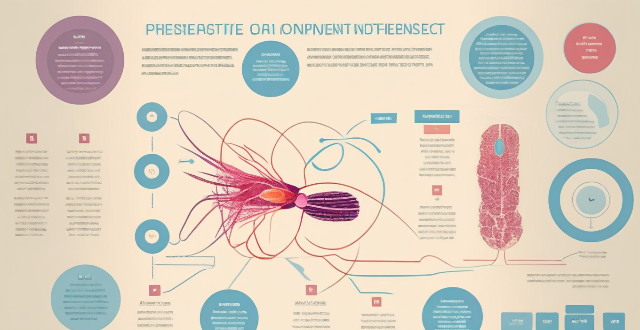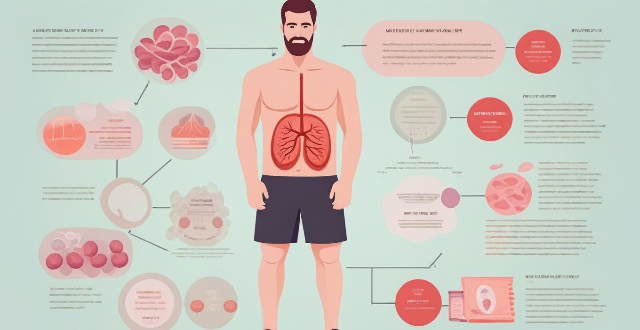Exercise Chronic

Can exercise reverse or slow the progression of existing chronic diseases ?
**Can Exercise Reverse or Slow the Progression of Existing Chronic Diseases?** Chronic diseases like diabetes, heart disease, and cancer often require lifelong management. Many wonder if exercise can play a role in mitigating these conditions. This discussion explores the potential benefits of physical activity for those with chronic illnesses. **Benefits of Exercise for Chronic Diseases:** - **Cardiovascular Disease**: Improved blood pressure, reduced risk of heart attack, enhanced lipid profile. - **Diabetes**: Better blood sugar control, aid in weight management, reduced complications. - **Cancer**: Improved quality of life, reduced fatigue, potentially better survival rates. **How Exercise Contributes to These Benefits:** - Increased blood flow ensures better organ oxygenation and nutrient delivery. - Anti-inflammatory effects alleviate symptoms of chronic diseases. - Boosted immune function helps fight infections and potentially cancer cells. **Implementing an Exercise Program:** - **Consultation**: Always consult your healthcare provider before starting. - **Gradual Progression**: Start slowly and build up over time. - **Balanced Routine**: Include cardio, strength training, and flexibility exercises. - **Monitoring Response**: Track how your body responds to different exercises. **Conclusion:** While exercise might not reverse chronic diseases outright, it significantly slows their progression and enhances well-being. Tailoring an exercise program under medical guidance allows those with chronic conditions to actively manage their health, improving their quality of life.

Is it true that exercise can help manage chronic pain conditions ?
Exercise can help manage chronic pain conditions by reducing pain intensity, improving physical function, enhancing quality of life, and increasing energy levels. It is important to consult with a healthcare professional before starting any exercise program and to start slowly, gradually increasing intensity over time while listening to your body's responses.

How much exercise is needed per week to prevent chronic disease ?
Chronic diseases are a major cause of death and disability worldwide. Regular physical activity can help reduce the risk of developing chronic diseases such as heart disease, diabetes, and some types of cancer. According to the World Health Organization (WHO), adults should aim to do at least 150 minutes of moderate-intensity aerobic exercise or 75 minutes of vigorous-intensity aerobic exercise each week, along with muscle-strengthening activities at least twice a week. However, the amount of exercise needed to prevent chronic diseases may vary depending on individual factors such as age, sex, body weight, and overall health status. It's recommended that people try to incorporate at least 30 minutes of moderate-intensity aerobic exercise into their daily routine, along with strength training exercises whenever possible.

Can exercise physiology be used to treat chronic diseases like diabetes and hypertension ?
Exercise physiology can be effectively used to treat chronic diseases like diabetes and hypertension by improving blood sugar control, aiding in weight management, reducing blood pressure, and enhancing cardiovascular health. Individualized exercise programs, education on lifestyle modifications, and consistent support from professionals contribute to better disease management and overall well-being.

How can older adults with chronic conditions incorporate exercise into their daily routine ?
Incorporating exercise into the daily routine of older adults with chronic conditions is crucial for maintaining their overall health and well-being. Here are some tips on how they can achieve this: * Start slowly by gradually increasing the duration and intensity of low-impact exercises like walking or swimming. * Choose appropriate exercises that focus on strength training, flexibility, and range of motion to reduce the risk of injury. * Set realistic short-term and long-term goals to build momentum and confidence. * Make exercise a habit by scheduling specific times during the day and creating a routine. * Stay safe and comfortable by wearing appropriate gear, staying hydrated, and seeking professional advice when needed. * Track progress in a journal and celebrate milestones to stay motivated.

Does high-intensity interval training (HIIT) have specific benefits for chronic disease prevention ?
High-intensity interval training (HIIT) offers numerous benefits for chronic disease prevention, including improved cardiovascular health, enhanced glucose control, reduced inflammation, increased muscle mass and strength, and improved mental health outcomes. To incorporate HIIT into a healthy lifestyle, start slowly, choose the right exercises, include other forms of exercise, and consult with a health professional.

How does regular exercise contribute to the prevention of chronic diseases ?
Regular exercise is essential for preventing chronic diseases by improving cardiovascular health, managing weight, and promoting mental health benefits. It strengthens the heart, lowers blood pressure, reduces cholesterol levels, burns calories, increases metabolism, improves insulin sensitivity, reduces stress and anxiety symptoms, improves sleep quality, and reduces depression symptoms. Incorporating regular exercise into your daily routine can provide long-term health benefits beyond physical fitness alone.

Are there any age-related considerations when using exercise to prevent chronic diseases ?
Age-related considerations for using exercise to prevent chronic diseases include cardiovascular health, musculoskeletal health, balance and coordination, and cognitive health. Exercise intensity should be adjusted based on maximum heart rate, and low-impact exercises are recommended for joint pain. Weight-bearing exercises can help reduce the risk of osteoporosis. Balance and coordination exercises can reduce the risk of falls, and stretching can maintain flexibility. Regular exercise can also improve cognitive function and alleviate symptoms of depression and anxiety in older adults.

Can exercise be used as a treatment for chronic diseases like diabetes or hypertension ?
Exercise can be used as a treatment for chronic diseases like diabetes and hypertension by improving insulin sensitivity, promoting weight loss, reducing cardiovascular risk, and providing stress relief. Recommended exercises include aerobic activities, resistance training, yoga, and tai chi. It is important to consult with a healthcare professional before starting an exercise program.

In what ways does exercise improve mental health, potentially reducing the risk of chronic diseases ?
Regular exercise has been found to have numerous mental health benefits, such as boosting mood and reducing stress, improving sleep quality, enhancing cognitive function, promoting social interaction, and boosting self-esteem and body image. Additionally, regular physical activity can potentially reduce the risk of chronic diseases like cardiovascular diseases, diabetes, and obesity. Incorporating exercise into your daily routine can improve both physical and mental well-being.

What are the benefits of regular exercise on personal health ?
Regular exercise is crucial for maintaining good health and preventing chronic diseases. It improves cardiovascular health, aids in weight management, increases muscle strength and endurance, enhances mental health, improves sleep quality, and reduces the risk of chronic diseases. Incorporating physical activity into your daily routine can significantly improve your overall quality of life.

Can wearable technology effectively monitor chronic health conditions ?
Wearable technology shows potential in monitoring chronic health conditions by providing real-time data on health metrics. However, accuracy, data overload, and privacy concerns are limitations to consider. It should be used in conjunction with other forms of healthcare monitoring for effective management of chronic conditions.

How can sedentary lifestyles contribute to the development of chronic conditions ?
Sedentary lifestyles, characterized by prolonged periods of inactivity or sitting, have become increasingly common in modern society. This shift from active to passive living has significant implications for health, contributing to the development of a range of chronic conditions such as metabolic disorders, cardiovascular diseases, musculoskeletal issues, and other health concerns. To mitigate these effects, regular exercise, active commuting, workplace interventions, and lifestyle changes are recommended.

What are the consequences of chronic procrastination ?
Procrastination is a common behavioral pattern where individuals delay or put off tasks until the last minute. While occasional procrastination may not cause significant harm, chronic procrastination can lead to various negative consequences. In this article, we will discuss the potential effects of persistent procrastination on an individual's life. Chronic procrastination often results in increased stress levels due to the accumulation of unfinished tasks and deadline pressures. Procrastination leads to poor time management skills, as individuals tend to underestimate the time required to complete tasks. Chronic procrastination can also have a negative impact on an individual's self-efficacy, or their belief in their ability to succeed. Procrastination can strain personal relationships, both professionally and personally. Colleagues and friends may become frustrated with the individual's lack of commitment and follow-through, leading to conflicts and misunderstandings. In academic settings, chronic procrastination can lead to poor grades and missed opportunities for learning. Similarly, in professional environments, consistent procrastination can hinder career advancement and limit job opportunities. Chronic stress from procrastination can take a toll on an individual's physical health. The constant pressure and anxiety associated with procrastination can contribute to issues such as headaches, digestive problems, and weakened immune function.

How does consistent physical activity affect the immune system in relation to chronic disease prevention ?
The article discusses the impact of consistent physical activity on the immune system and its role in preventing chronic diseases. It explains that regular exercise can increase the number and activity of immune cells, reduce inflammation, and improve overall health. The article also provides recommendations for exercise and emphasizes the importance of incorporating physical activity into one's lifestyle to prevent chronic diseases and improve well-being.

Can exercise boost the immune system ?
Exercise can indeed boost the immune system through various mechanisms, including enhanced circulation, reduced inflammation, weight management, stress reduction, improved sleep, increased self-esteem and mental health, microbiome diversity, temperature regulation, prevention of chronic diseases, and social interaction. Regular moderate exercise is generally considered beneficial for the immune system, but it's essential to consult with healthcare professionals to determine the appropriate amount and intensity of exercise for individual needs and circumstances.

What types of exercises are most effective in preventing chronic illnesses ?
The article discusses various types of exercises that are most effective in preventing chronic illnesses. It mentions aerobic exercises such as walking, running, cycling, and swimming; strength training including weightlifting, resistance bands, and bodyweight exercises; flexibility and balance activities like yoga, tai chi, and pilates; high-intensity interval training (HIIT); and combination workouts like circuit training and group fitness classes. The article also emphasizes the importance of consistency, variety, progression, and individualization in exercise routines to achieve long-term health benefits.

What is the difference between acute and chronic conditions in first aid ?
The article discusses the difference between acute and chronic conditions in first aid, highlighting key points to remember for each type. Acute conditions are sudden, severe, and short-term, often requiring immediate action and potentially lifesaving interventions. Examples include heart attack, stroke, severe allergic reactions, fractures or dislocations, poisoning, severe burns or scalds, and severe bleeding or shock. Key points to remember for acute conditions are to act quickly, call for help, and stabilize the patient while waiting for professional medical assistance. Chronic conditions, on the other hand, are long-term health problems that persist over time and often require ongoing management rather than urgent intervention. Examples include diabetes, asthma, high blood pressure, arthritis, COPD, migraines, and epilepsy. Key points to remember for chronic conditions are to know the patient's history, monitor symptoms, seek medical advice, and educate yourself about the specific condition. In summary, understanding the differences between acute and chronic conditions is essential when providing first aid to ensure appropriate care is given based on the nature of the condition.

How does exercise influence aging and longevity ?
Exercise is crucial for maintaining good health and well-being, with numerous benefits including improved cardiovascular health and reduced risk of chronic diseases. It also has a significant impact on aging and longevity, as regular physical activity can help maintain muscle mass, improve bone density, and reduce the risk of chronic diseases. Exercise also has mental health benefits, such as improved cognitive function and reduced risk of depression and anxiety. Numerous studies have shown that exercise can lead to an increased lifespan by reducing the risk of premature death from various causes. Examples of long-lived populations, such as the Okinawans and Nicoyans, demonstrate the importance of an active lifestyle in promoting healthy aging and longevity. Incorporating exercise into your daily routine can lead to a higher quality of life during your golden years and potentially extend your lifespan.

How does exercise influence cortisol levels, which are associated with stress ?
Exercise has a complex relationship with cortisol levels and stress management. Acute exercise can cause a temporary increase in cortisol levels, while chronic exercise can help regulate them over time. By managing stress through regular physical activity, individuals can maintain healthy cortisol levels and improve their overall well-being. Chronic stress and persistently high cortisol levels can contribute to a range of health problems, including weight gain, high blood pressure, impaired immune function, decreased bone density, increased risk of heart disease and stroke, and mood disorders such as anxiety and depression. Regular exercise can help manage stress and maintain healthy cortisol levels by improving mood and mental health, better sleep quality, and increased resilience to stress.

Is it safe to exercise while taking immunosuppressant medications ?
Is it safe to exercise while taking immunosuppressant medications? This article explores the potential risks and benefits of exercising while taking immunosuppressant medications. While these drugs are essential for many people, they can also have side effects that may impact a person's ability to exercise safely. The primary concerns associated with exercising while taking immunosuppressant medications include an increased risk of infection, fatigue and weakness, and musculoskeletal issues. However, regular exercise has been shown to improve mental health, enhance immune function, and reduce the risk of chronic diseases. It is generally safe for individuals taking immunosuppressant medications to exercise, but they should take certain precautions to minimize their risk of infection and other potential complications.

What are some effective strategies for managing chronic conditions as part of personal health care ?
Managing chronic conditions requires a combination of self-care, education, lifestyle changes, and support from others. Developing a self-care plan, educating yourself about your condition, making healthy lifestyle choices, and seeking support from family and friends are all effective strategies for managing chronic conditions. By taking an active role in managing your symptoms and communicating effectively with your healthcare team, you can improve your overall quality of life and reduce the impact of your condition on your daily activities.

How does exercise impact memory and learning ?
Exercise has a positive impact on memory and learning by increasing blood flow, releasing neurotrophic factors, reducing inflammation, alleviating stress, and improving sleep quality. Incorporating physical activity into daily routine can enhance cognitive functions.

How does regular exercise impact the social well-being of seniors living alone ?
Regular exercise is crucial for enhancing the social well-being of seniors living alone, as it improves mood and mental health, increases social interaction, enhances cognitive function, and reduces the risk of chronic diseases. Engaging in regular exercise can help seniors maintain their independence and improve their overall quality of life.

Are there any particular sports or activities recommended for people at high risk of chronic diseases ?
The text provides recommendations for sports and activities suitable for individuals at high risk of chronic diseases such as heart disease, diabetes, or obesity. It emphasizes the importance of regular physical activity and suggests low-impact cardiovascular exercises like walking, swimming, and cycling. Strength training options include resistance band workouts, bodyweight exercises, and light weightlifting. The text also highlights flexibility and balance exercises like yoga and Tai Chi. It advises starting slowly, using proper equipment, and consulting professionals to ensure safety and effectiveness.

How does regular exercise contribute to overall health management ?
This text discusses the importance of regular exercise for overall health management, highlighting its physical, mental, and emotional benefits. It emphasizes that exercise not only helps maintain physical health but also significantly contributes to mental and emotional well-being. The article lists various ways in which regular exercise contributes to overall health management, including improving cardiovascular fitness, aiding in weight management, enhancing muscle and bone health, boosting the immune system, preventing chronic diseases, reducing stress, improving mood, enhancing cognitive function, boosting self-esteem, providing opportunities for social interaction, and contributing to personal achievement. The text concludes by emphasizing that regular exercise is a crucial tool for managing overall health and that incorporating it into one's lifestyle is one of the best investments one can make for their health and well-being.

How does regular exercise contribute to boosting the immune system ?
Regular exercise has numerous health benefits, including boosting the immune system. It promotes increased blood circulation, reduces inflammation, helps in weight management, reduces stress, improves sleep quality, enhances gut health, increases antioxidant capacity, supports cardiovascular health, enhances mental health, and contributes to increased longevity. Incorporating regular physical activity into your lifestyle can support a strong and resilient immune system.

What role does endorphin release during exercise play in improving mood ?
**The Role of Endorphin Release During Exercise in Improving Mood:** Endorphins, acting as natural painkillers and contributors to feelings of pleasure, play a crucial role in the connection between exercise and mood enhancement. The "Runner's High" phenomenon, characterized by euphoria and reduced pain perception, is attributed to endorphin release during sustained physical activity. Immediate benefits include pain reduction, stress relief, and pleasure induction. Long-term mood enhancement can be achieved through regular exercise habits, chronic pain management, and mental health support. To maximize endorphin release during exercise, individuals should choose enjoyable activities, maintain consistency, gradually increase intensity, stay hydrated and nourished, and incorporate variety. Understanding the role of endorphins can inform lifestyle choices to maximize mood benefits from exercise.

How does exercise benefit socialization in older adults ?
Exercise is not only beneficial for physical health but also plays a crucial role in enhancing socialization among older adults. Here's how: Improved Mood and Confidence, Increased Opportunities for Social Interaction through Group Activities and Outdoor Exercise, Enhanced Cognitive Function, Physical Health Benefits Supporting Social Engagement, and Mental Health and Well-being. In conclusion, regular exercise provides numerous avenues for increased socialization among older adults by improving emotional well-being, cognitive function, physical health, and creating opportunities for interaction through various activities. It's a holistic approach to enhancing the social lives of seniors, contributing to their overall quality of life.

Can exercise help with stress management ?
**Topic:** Can Exercise Help with Stress Management? **Summary:** * **Introduction:** The inevitability of stress and its potential impact on health highlight the importance of effective stress management. Exercise is often touted as a beneficial method for reducing stress. * **Relationship Between Exercise and Stress:** * **Physical Effects:** Exercise triggers endorphins, reduces cortisol levels, and improves sleep quality—all of which contribute to stress reduction. * **Mental Effects:** Enhanced cognitive function, increased self-esteem, and mindfulness techniques associated with exercise can aid in stress management. * **Benefits of Exercise for Stress Management:** * **Physical Benefits:** Improved cardiovascular health, weight management, and pain relief can reduce stress caused by related health issues. * **Mental Benefits:** Exercise can alleviate symptoms of anxiety and depression, improve mood, and increase resilience to stress. * **Practical Tips:** * **Setting Goals:** Start small and choose enjoyable activities to make exercise a sustainable habit. * **Consistency:** Scheduling workouts, finding an accountability partner, and tracking progress can help maintain a regular exercise routine. * **Conclusion:** Exercise is a powerful tool for managing stress, offering both physical and mental benefits. Incorporating it into one's lifestyle can significantly enhance overall well-being and resilience to life's challenges.